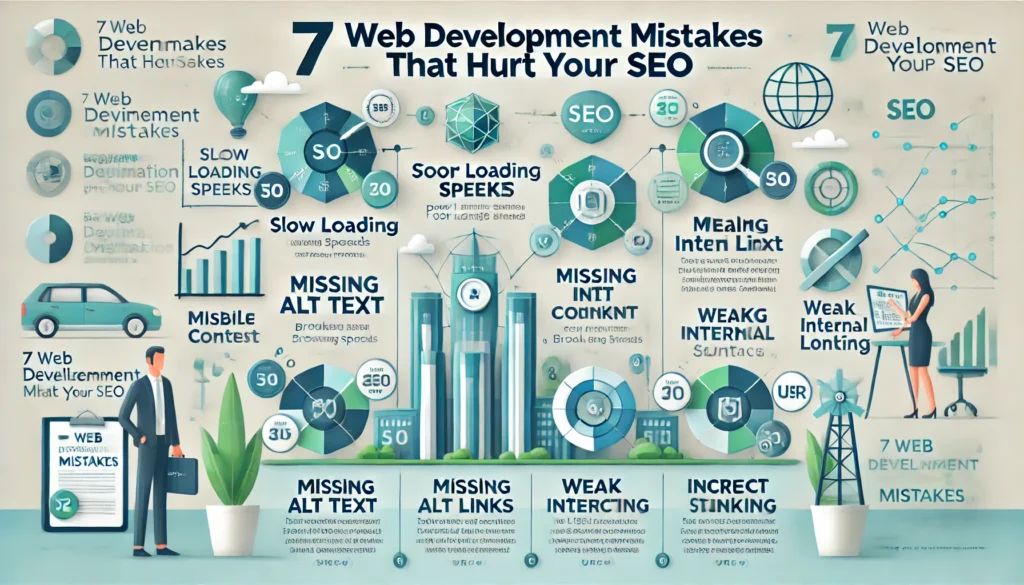Reach Out to Masteredge Get in Touch with Our IT Experts
We Are Here Always

Search engine optimization (SEO) is essential in making your website visible and accessible to users and search engines alike. However, even well-intentioned web development can unintentionally hurt your site’s SEO if certain practices aren’t followed. Let’s examine seven common web development mistakes that can significantly harm your site’s SEO and what you can do to avoid them.
With more than half of internet traffic coming from mobile devices, mobile responsiveness has become critical for SEO. Google’s mobile-first indexing means that the search engine primarily uses the mobile version of your site for indexing and ranking. A site that doesn’t adapt seamlessly to different screen sizes may appear unprofessional to users and will suffer in search rankings.
To ensure mobile responsiveness:
Page speed is another critical factor in SEO. Users expect quick-loading websites, and Google rewards fast sites with better rankings. According to Google’s Core Web Vitals, slow load times can lead to higher bounce rates and poor user experience, impacting SEO directly.
To speed up your website:
Meta tags like titles, descriptions, and headers play a pivotal role in helping search engines understand your site’s content. Failing to include accurate and descriptive meta tags can reduce click-through rates (CTR) and hinder a page’s visibility on search engine results pages (SERPs).
Avoid these common meta tag mistakes:
Google favors sites that use HTTPS over HTTP for security reasons. SSL certificates encrypt data, making browsing safer for users. Sites without HTTPS appear as “Not Secure” in browsers, which can decrease user trust and lead to higher bounce rates.
For SEO benefits:
Pop-ups and intrusive ads can disrupt the user experience, leading to a high bounce rate and lower rankings. Google specifically penalizes sites with intrusive interstitials, especially if they obstruct main content or appear right after a user lands on the page.
Best practices for pop-ups and ads:
URLs are another key element in SEO. Complex or confusing URLs with excessive characters, irrelevant numbers, or no logical structure can make it difficult for both users and search engines to understand page content. Well-structured, descriptive URLs are easier for search engines to index and for users to remember.
To create SEO-friendly URLs:
example.com/seo-tips instead of example.com/seotips).Sitemaps and robots.txt files are essential for helping search engines crawl and index your site efficiently. A sitemap provides a roadmap of your site’s structure, making it easier for search engines to find and rank content. Robots.txt, on the other hand, tells search engines which pages to crawl and which to ignore.
Best practices for sitemaps and robots.txt:
Optimizing your website for SEO involves more than just keywords and content—it requires a strong technical foundation that supports search engine visibility and a positive user experience. Avoiding these seven common mistakes can keep your website in Google’s good graces, ultimately leading to higher rankings and more traffic.
Reach Out to Masteredge Get in Touch with Our IT Experts
We Are Here Always